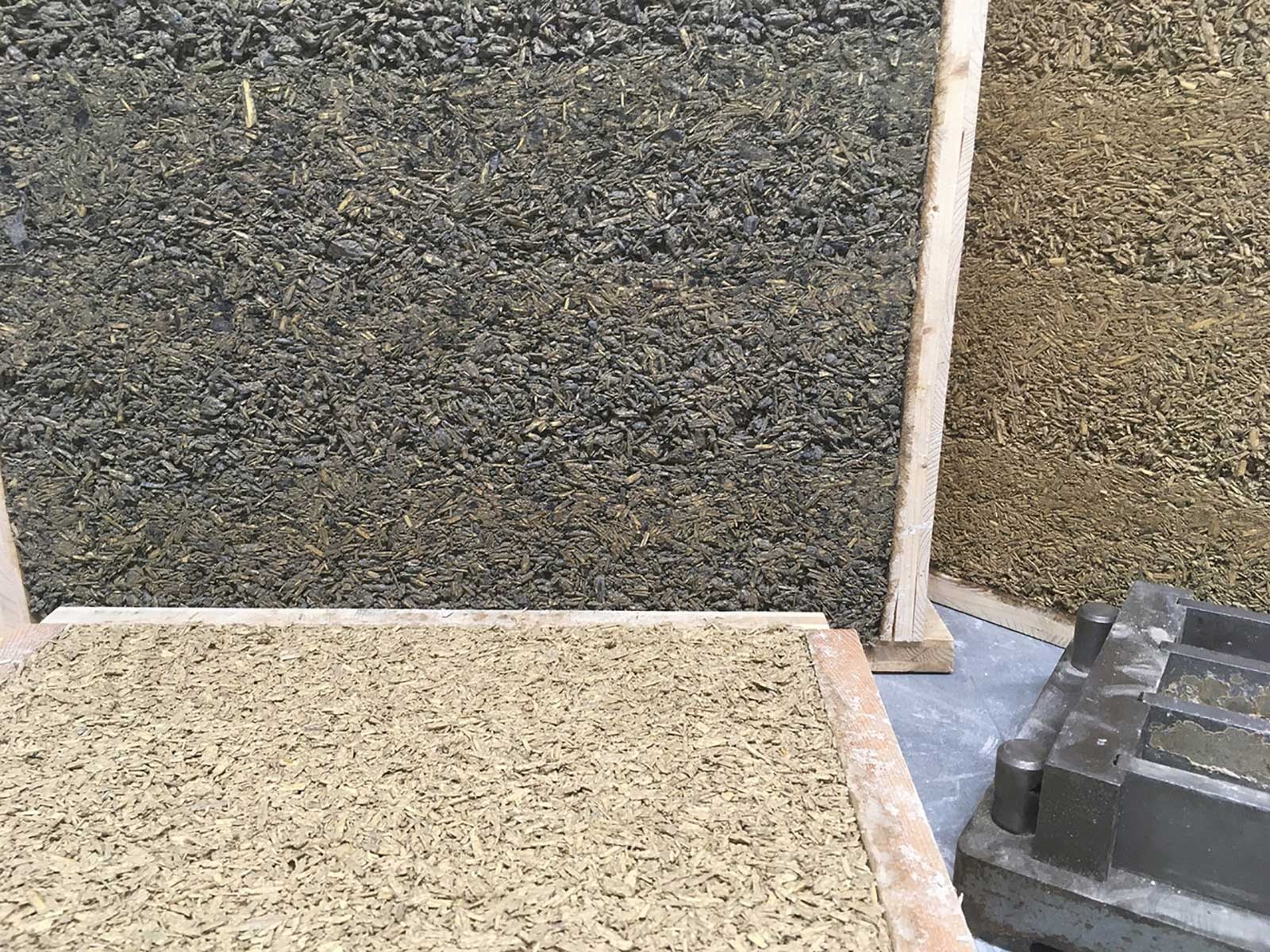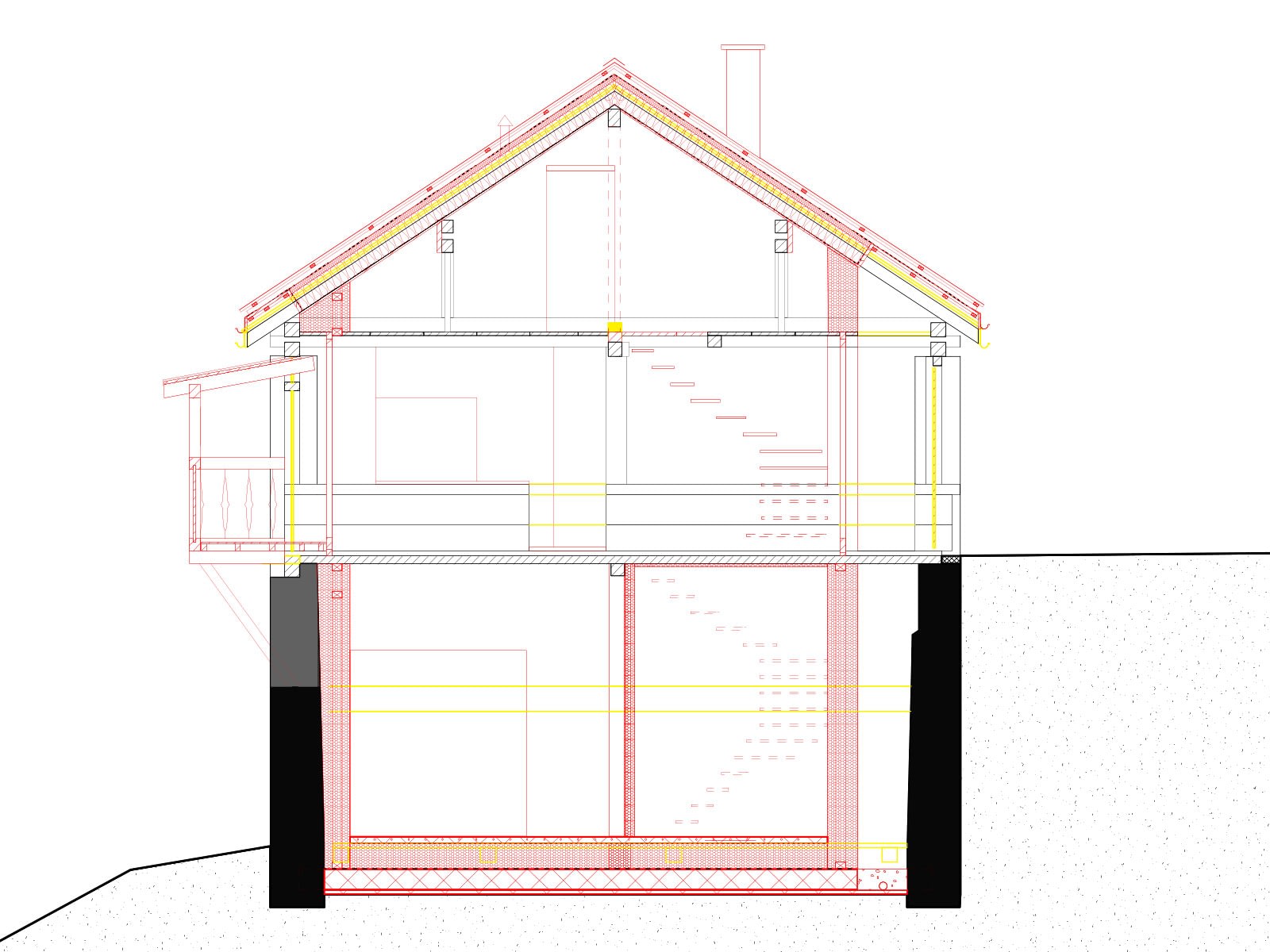Fri 16 Sep
11:40
Delphine Schmid, Kalkwerk, Strada
Hemp Lime
It sounds like an architectural dream. A material that can act as a wall, insulation and surface in one; is good for the environment; and, moreover, thanks to its structure has a special aesthetic. A fireproof material, which can be rammed monolithically into different forms, rests on a timber framework construction, and in renovated buildings fits seamless with what pre-exists. Hemp hurds, lime and vegetable carbons are materials that breathe; they create a healthy spatial climate.
Lime has been used as a building material for 14’000 years, and only fell into abeyance in the last 100 years. Lime products harden by absorbing CO2 back from the air, causing the chalk to revert to its original chemical composition.
Hemp is one of the oldest crop plants on earth, growing rapidly and thus extracting CO2 from the air. By treating it with lime, the ligneous siliceous hemp hurds mineralise and become conserved.
Vegetable carbons are produced by pyrolysis, whereby a large proportion of the vegetable carbons are transformed into stable molecular structures. Their average retention period in the ground is 1,440 to 14,500 years. By this means the material acts as a carbon sink.
After a number of years of professional work in an architectural office, I wanted to learn how to make a lime-plaster finish. I met the lime burner and sgraffato artists Joannes Wetzel, and together we founded the kalkwerk Association, with the aim of promoting regional lime burning using old craft techniques and wood as a renewable source. In 2020 we financed a lime burning via crowdfunding, and public interest grew. We then founded a company as an independent umbrella for all of our projects.
We got to know hemp-lime builders from Germany and South Tyrol; our network of craftspeople and researchers became bigger and bigger. Soon we were also exchanging ideas with a group in Switzerland, all of whom has already gathered experience with hemp lime or were shortly about to start working with the material. It was an invaluably rich resource, allowing us to draw on knowledge and apply it in our own projects.
In the Lower Engadine the renovation of historical buildings is an important issue. To what extent can architectural interventions match the new occupancies, the energy laws and heritage preservation requirements? How can we build at all in the future without resorting to industrial building materials that are manufactured using fossil energies? With 35-cm-thick hemp-lime walls, we were able to realise a pioneering regional project with the refurbishment of a stable barn in Vnà.
Again and again, customers have asked as to apply lime finishes to Fermacell boarding. This proved for us, with our deliberate emphasis on regional materials and our own mixtures, to be a suboptimal approach. So it was that we came up with the idea of making hemp-lime boards ourselves. Through our mediation work, customers often find their way to us who appreciate natural building materials. This allows us to carry on experimenting with hemp, lime and vegetable carbons. Via the combination of architecture and manual know-how, we are able to immediately implement ideas ourselves.
References
Schmidt, Hans-Peter, Nikolas Hagemann, Fredy Abächerli, Jens Leifeld and Thomas Bucheli. „Pflanzenkohle in der Landwirtschaft“. Agroscope Science, Nr. 112 (2021): 5. → Link

© Delphine Schmid

© Delphine Schmid
Delphine Schmid, Architektin Msc ETH Arch | SWB
Delphine Schmid already acquired building supervision experience whilst studying architecture at ETH Zurich (2009–2015). Her passion for natural materials, craftwork and “the spirit of a place” led her to intensively explore rammed-earth techniques.
During her work as a project and building supervisor at bernath+ widmer Architekten, Delphine acquired valuable insights into historical conservation practices in new building and renovations. Her interest focuses on lime craftwork and the Lower Engadine, where she co-founded the kalkwerk Association in 2020. In 2021 Delphine Schmid made herself professionally independent, together with the lime renderer Joannes Wetzel, and founded the firm fabricat multifari.